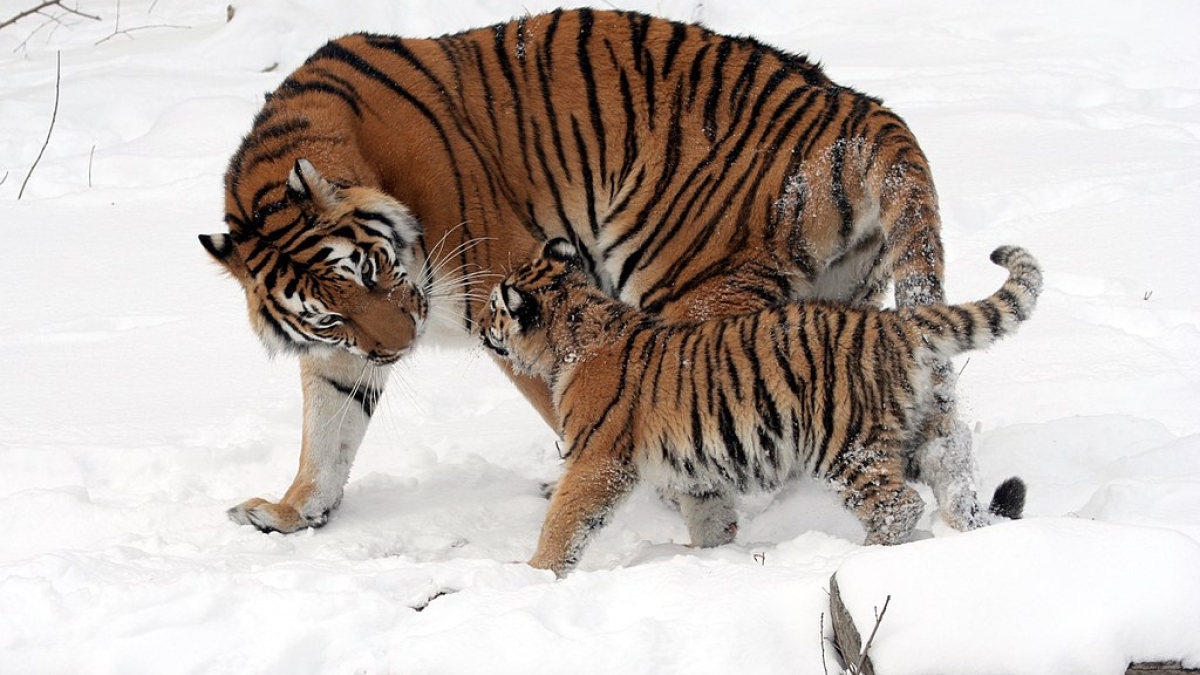If conservation science is going to save the myriad species under threat in the world today, it’s going to have to go about it more efficiently, according to a paper published this week by an Arizona State University ecology professor.
If academia remains in an ivory tower and nongovernmental organizations working to save species lurch from problem to problem, headway won’t be made fast enough to stem the tide of biodiversity loss, said Leah Gerber, a professor in the School of Life Sciences. She is also founding director of the Center for Biodiversity Outcomes, where she leads a team of staff and scholars building capacity to solve the most pressing biodiversity environmental challenges.
“The idea is to be more systematic,” Gerber said. “We have an exciting opportunity to bring ASU's deep breadth and depth of scholarship from multiple disciplines to decision-making contexts and folks working on the ground globally to give them what they need for informed, science-based decision-making.”
Like many other fields, conservation science tends to rely on intuition — rather than evidence — about decision-making, resource allocation and spatial planning. Evidence would be the basis for an actionable principle, Gerber said.
“For example, if you want to do science that has impact, here’s how you do it,” she said. “We’re still winging it instead of being systematic.”
What Gerber proposes is a particular kind of boundary organization in conservation science — one with interdisciplinary research capacity and “real‐world” experience.
Last year ASU powered up its conservation biology program by adding seven professors of practice to the faculty as part of a partnership between the Center for Biodiversity Outcomes and Conservation International, the biggest American conservation organization.
Cambridge, Cornell and Stanford have set up similar partnerships in recent years. Gerber hopes that model will become the wave of the future in conservation.
“Increasingly this has to be the way it goes, because it’s an efficiency issue,” she said. “Conservation International has excellent scientists, but they’re doing a lot more than science. This offers an opportunity for ASU to offer a deep research bench to achieving measurable conservation outcomes across the globe, all while training the next generation."
Conservation organizations get the best science, methods and technologies. Scientists get to see their research implemented on the ground.
“What we collectively get is by putting those two things together we get a different type of innovation that we haven’t yet realized,” Gerber said.
The paper, co-authored with Daniela Raik, a senior vice president of Conservation International, was published this week in the Ecological Society of America’s Frontiers in Ecology and the Environment.'"
“Conservation organizations know that we can’t achieve our objectives working alone," Raik said. "We need many partners from all sectors. Universities are no exception since we rely on science and knowledge to help us develop tools and guide our efforts to have the greatest impact as quickly as possible.”
Top photo: One of two Amur tiger cubs, Thyme and Warner, at the Buffalo Zoo with their mother, Sungari. The cubs were born at the zoo to Sungari and father Toma, on Oct. 7, 2007. Photo by Dave Pape/Courtesy of Wikipedia Commons
More Science and technology

Breakthrough copper alloy achieves unprecedented high-temperature performance
A team of researchers from Arizona State University, the U.S. Army Research Laboratory, Lehigh University and Louisiana State University has developed a groundbreaking high-temperature copper alloy…

4 ASU researchers named senior members of the National Academy of Inventors
The National Academy of Inventors recently named four Arizona State University researchers as senior members to the prestigious organization.Professor Qiang Chen and associate professors Matthew…

Transforming Arizona’s highways for a smoother drive
Imagine you’re driving down a smooth stretch of road. Your tires have firm traction. There are no potholes you need to swerve to avoid. Your suspension feels responsive. You’re relaxed and focused on…


